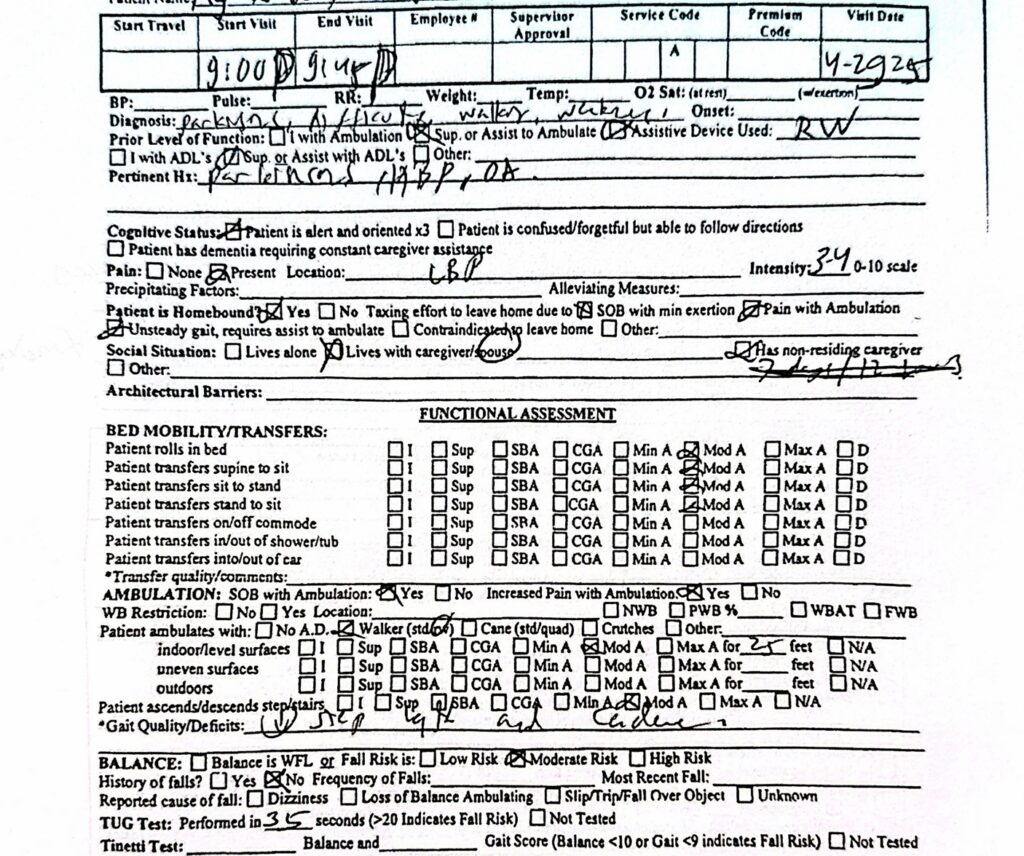If your team spends hours each week filling out PDF forms manually—copying data from onboarding sheets, scanned documents, or handwritten notes—you’re not alone. Whether you’re in healthcare, compliance, staffing, or licensing, repetitive document prep is one of the most common and costly operational bottlenecks.
But what if you could reduce a 2-hour task to under 2 minutes?
With Instafill.ai, that’s not a theoretical benefit. It’s already happening.
Manual Form Filling: Why It’s Slower Than You Think
Filling out a form may sound simple. But in practice, it’s a tedious and layered process—especially when the documents are long, data is fragmented, and formats are inconsistent. Here’s what slows people down:
1. Field Dependencies Spread Across the Form
Many forms aren’t linear. A checkbox on page 2 might trigger a requirement on page 14. An address filled in once might need to be repeated in different formats across five sections. Tracking dependencies across large PDFs requires constant scrolling, memory, and backtracking—none of which are fast or error-free for a human.
2. Formatting and Field Adaptation
Real-world data is rarely form-ready. It often requires reformatting to match the structure of each individual form:
- Phone numbers
Input:+1 (415) 222-1000
Form expects:[415] [222] [1000] - Social Security Numbers (SSNs)
Input:123-45-6789
Form expects:[123] [45] [6789] - Addresses
Input:701 Mission St, San Francisco, CA 94103
Form expects:[Street Address] [City] [State] [ZIP Code] - Dates
Input:January 12, 2024
Form might expect:01/12/24,01-12-2024, or even011224

Every one of these formatting tweaks takes time and attention—and failure to adapt can result in a rejected or unreadable form.
3. Tables: The Copy-Paste Nightmare
Structured data like employment history, family details, or financial breakdowns are often collected in table format. But PDF forms don’t allow you to paste entire tables. You must click into every single cell, copy and paste individual values, and align everything perfectly.
This kind of micro-tasking is exhausting, repetitive, and highly prone to mistakes.

4. Handwritten Notes: A New Layer of Friction
In healthcare, counseling, or social work, data often arrives in handwritten form—think therapist notes, intake assessments, or doctor summaries.
And most of it is a decoding exercise:
- Poor handwriting
- Medical shorthand
- Non-standard formatting
- Abbreviations and acronyms
The average admin can’t make sense of these notes without clarification. In contrast, Instafill.ai is trained to read handwritten content, even in scan or photo formats. It extracts structured data from messy or partial notes and accurately maps it to relevant fields—no manual transcription needed.

Instafill.ai: 30 Pages in Under 90 Seconds
Instafill.ai dramatically accelerates form completion. Once a form has been analyzed (a one-time process), the system fills it in seconds—even complex, multi-page documents.
| Form Length | Human Time (Avg) | Instafill.ai Time |
|---|---|---|
| 5–6 page form | 60+ minutes | < 30 seconds |
| 15–20 page form | 2-4 hours | ~60 seconds |
| 25–30 page form | 4-6+ hours | 60–90 seconds |
Unlike humans, the AI doesn’t slow down with more pages. It doesn’t get distracted. It doesn’t forget a field halfway through. It just does the job—completely and accurately—every single time.
Why This Is a Great Job for AI—and a Terrible One for People
Let’s be honest. Manually filling out forms isn’t meaningful work. It’s tedious, repetitive, and draining.
It’s monkey work—but critical monkey work.
For people, it’s a source of burnout. For AI, it’s the perfect task:
- No breaks
- No complaints
- No errors from fatigue or distraction
Instafill.ai processes scanned documents, adapts formats, fills out tables, and handles field dependencies—consistently and instantly. It’s not just faster. It’s more reliable.
What You Can Do With the Time You Save
Time saved on form work isn’t abstract—it directly improves your business:
- Onboard more clients without growing your team
- Shift staff focus to quality control or client success
- Eliminate rework from formatting mistakes
- Reduce document turnaround times from hours to minutes
When every form takes seconds instead of hours, your team can focus on real work—not retyping addresses or splitting phone numbers into three boxes.
Need to convert a Word document to an editable PDF fom?
If you’ve got forms you regularly fill—whether they’re 5 pages or 30—upload one at Instafill.ai to get started. You can also convert scanned PDFs or Word documents into editable forms instantly and see how long it takes to complete them with real data. No setup. No coding. Just results.
Final Thought
Manual form filling is slow, expensive, and frustrating. And the larger the forms get, the more it breaks down. Instafill.ai was built for exactly this scenario. It fills forms in seconds, adapts to field formats, and never asks for a day off.
If you’re tired of filling out forms manually and want a faster, more accurate way to handle the process, consider using an AI form filler. Instafill.ai is built to handle everything from simple PDFs to complex, multi-page forms—automatically formatting data, handling dependencies, and even parsing handwriting. It’s ideal for teams who want to eliminate repetitive tasks and scale operations efficiently.